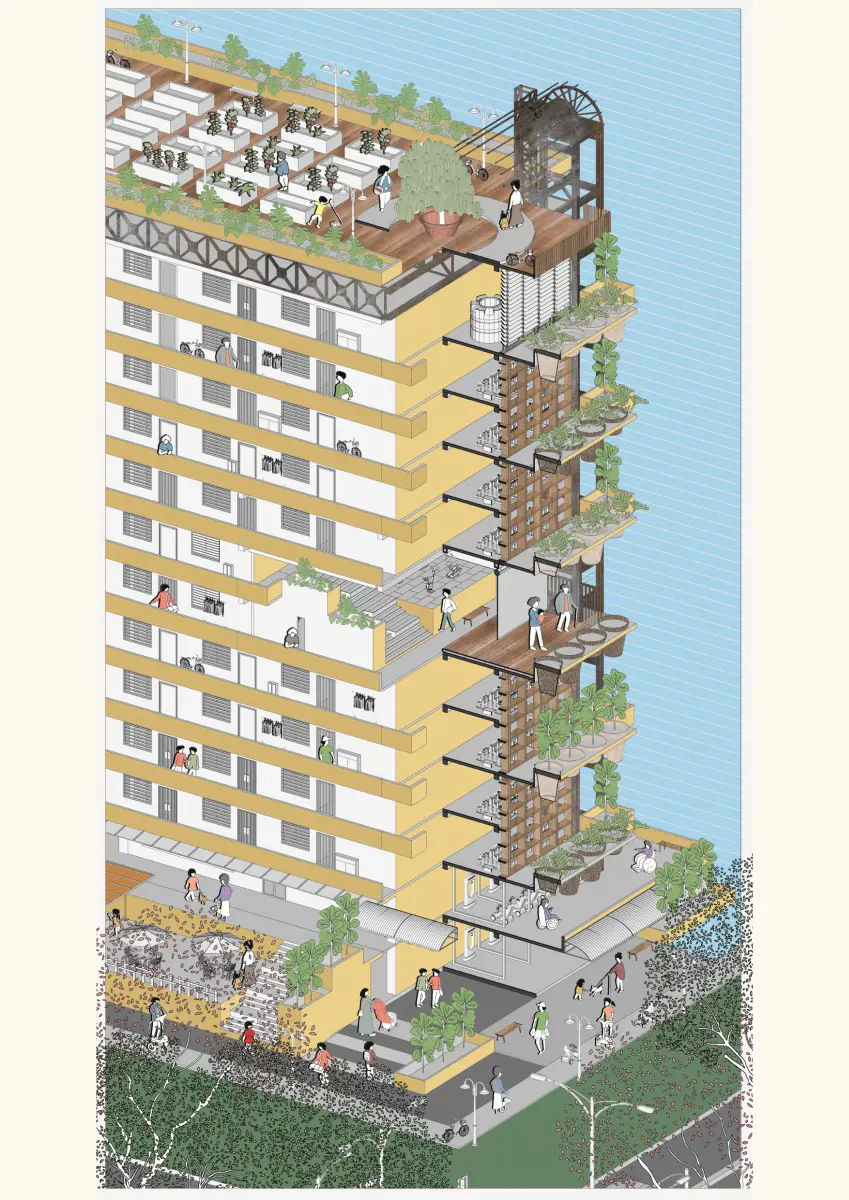
Second thoughts on SERS
BY Joshua Woon Zhi Xian
SUPERVISED BY Assoc. Prof. Cheah Kok Ming
STUDIO THEME ANTIFRAGILE FRAMING
Abstract
This thesis aims to apply the framework of Anti-Fragility - "Public Housing" model which hopes to benefit from disorders intensify the site through surgical interventions. Given the conditions of time, the thesis speculates the future of Public housing not only to cater for an aging population but also a transient one. Some conditions that are set in place to achieve the objectives include:
1) Being flexible to change with future conditions - speculated or projected that is only possible with a technical consideration
2) Cater to the existing & changing social conditions faced on the site of Lor 4 Toa Payoh + preserve what was previously on site
3) The element of Nostalgia - an intangible element plays a crucial part of SERS 2.0. As a narrative to preserve existing blocks & elements of Toa Payoh, it encapsulates the sense of memory that manifest itself within the built artifact.=
Given that our population would be ever changing, these stressors sculpts the architecture that adapt best when constantly refined and reshaped by their occupants. The proposal would be hinged on the Hardware - " How buildings learn" where the architecture - new architectural model hopes to age with the population while facing such "stressors". The new proposal seeks to uncover what time has intertwined with the build form - manifested in the artifact or architecture and extract this element to be preserved in this new form - unique to the the many neighborhoods.
Supervisor Comments
Selective En-bloc Redevelopment (SER) of public housing has a multitude of issues – higher density living, demolition waste, displacement of community, spatial equity and loss of situated memories. This thesis unpacks these concerns to reimagine SER with minimal compromises. The thesis demonstrates prudence by the consideration for a phasing plan and suitable construction technology in its effort to alleviate any form of inconveniences and hassles in the intensification and improvement process. Architecture becomes the mediator of environmental equity and re-establishes a community well-being among the new and existing residents.
- Assoc. Prof. Cheah Kok Ming